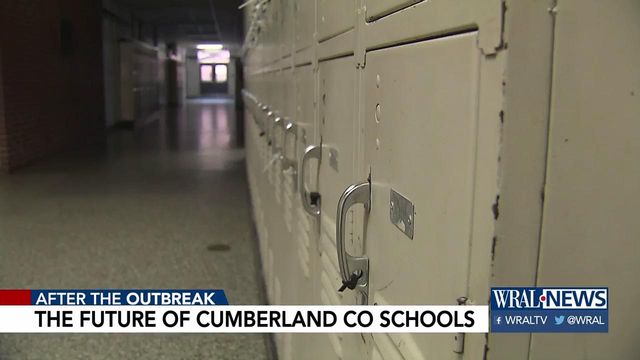State plans 3 steps -- education, staff, understanding -- to curb threats against schools
Thursday was an eye-opening morning for parents worried about their child's safety in school when a state task force revealed over 1,000 school threats had been made to NC schools in the past year.
The group had gathered to understand the problem and plan for how to address it in the coming school year.
A task force dedicated to making schools safer was briefed Thursday morning on threat data before discussing what can be done to reduce incidents.

"Threats range from 'I am going to beat you up' type of threat to mass violence type of event," said William Lassiter with the North Carolina Department of Public Safety.
The data shows that of the 1,147 threats made on school campuses over the past year:
11% were communicating threats of mass violence
Of the juveniles charged, 90% were male
Students themselves reported over 10,000 tips to authorities that included anything from guns on school property to suicide ideation to cyber bullying and drug use
The vast majority of threats are made on social media threats or are inappropriate comments that don't result in violence. About 25% of the threats tracked were fake threats, like a called-in bomb threat, but still were disruptive to classes, students and staff.
"Every time a gun comes on a school campus, that changes the atmosphere and the learning environment on that school's campus," Lassiter said. "It terrorizes the school. It makes young people on campus feel unsafe."
State and local leaders, part of the Task Force on Safer Schools, discussed multiple ways to reduce threats and violence heading into the 2023-24 school year.
One option is the EKG program, a new curriculum called Educating Kids About Guns and Gangs. The lessons are offered in 13 counties, with the expectation that they will be available in all public schools next year.
The task force will sponsor four School Safety Liaisons in which people are paid to work with the community and law enforcement to guide schools in how to help students stay safe. The data from that work will inform how the task force will ask for more.
"We are trying to get law enforcement to train kids as to what are the dangers of a firearm at school," Lassiter said.
The Department of Public Safety says there's been a spike in crime involving young people and guns. "We went from 3% of juvenile crime involving a firearm four years ago to 13% of juvenile crime involving a firearm last year," Lassiter said.
Out of those incidents, only 3% happen on school grounds, but leaders are working to do whatever it takes to get that down to zero.
The State Bureau of Investigation Behavioral Assessment Unit investigates major threats to schools to determine if the threat is real and how to prevent a student who makes a threat from escalating to real violence.
The state is also increasing the punishment for those who terrorize their school and community.
Another way the school task force aims to curtail crime in schools is by delivering gun locks – 25,000 will be handed out via school resource officers, PTA members and police and sheriff's offices.











